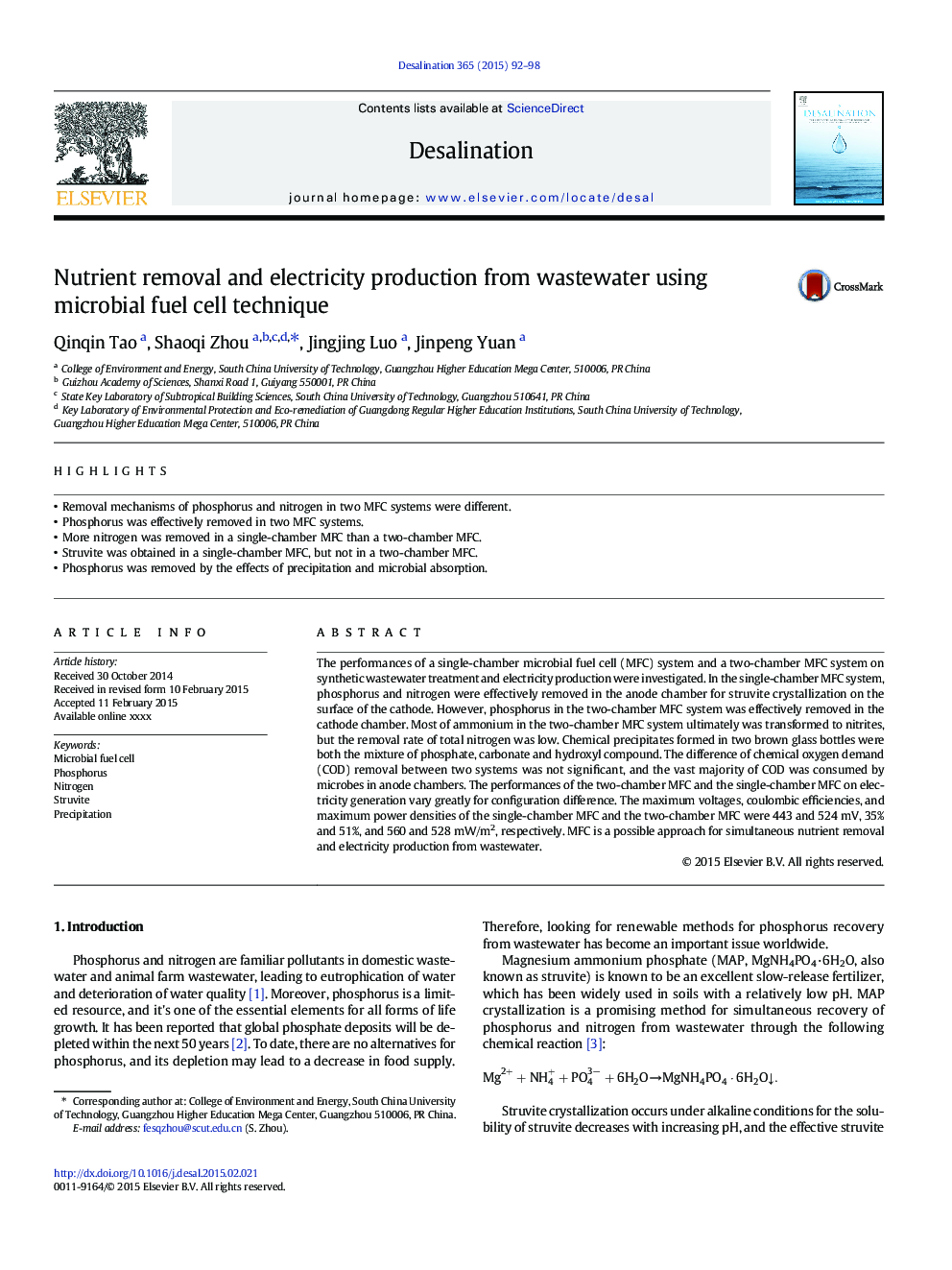| Article ID | Journal | Published Year | Pages | File Type |
|---|---|---|---|---|
| 7008316 | Desalination | 2015 | 7 Pages |
Abstract
The performances of a single-chamber microbial fuel cell (MFC) system and a two-chamber MFC system on synthetic wastewater treatment and electricity production were investigated. In the single-chamber MFC system, phosphorus and nitrogen were effectively removed in the anode chamber for struvite crystallization on the surface of the cathode. However, phosphorus in the two-chamber MFC system was effectively removed in the cathode chamber. Most of ammonium in the two-chamber MFC system ultimately was transformed to nitrites, but the removal rate of total nitrogen was low. Chemical precipitates formed in two brown glass bottles were both the mixture of phosphate, carbonate and hydroxyl compound. The difference of chemical oxygen demand (COD) removal between two systems was not significant, and the vast majority of COD was consumed by microbes in anode chambers. The performances of the two-chamber MFC and the single-chamber MFC on electricity generation vary greatly for configuration difference. The maximum voltages, coulombic efficiencies, and maximum power densities of the single-chamber MFC and the two-chamber MFC were 443 and 524Â mV, 35% and 51%, and 560 and 528Â mW/m2, respectively. MFC is a possible approach for simultaneous nutrient removal and electricity production from wastewater.
Related Topics
Physical Sciences and Engineering
Chemical Engineering
Filtration and Separation
Authors
Qinqin Tao, Shaoqi Zhou, Jingjing Luo, Jinpeng Yuan,
